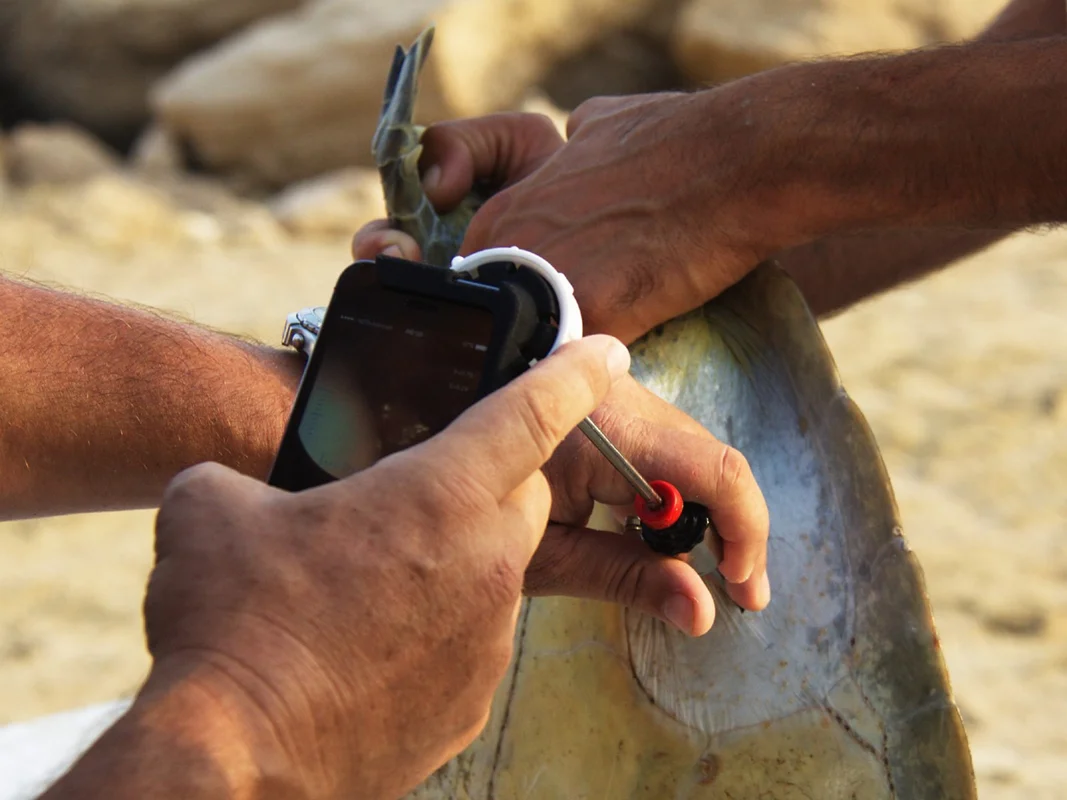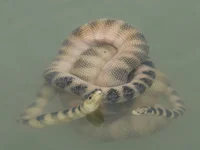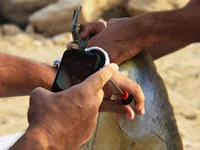Sea turtle sex-ratios in a changed climate
Duration: 2016 – continuing
Type: Research
Taxon: Sea turtles
Project administrator: Dr. Nicholas Pilcher, Marine Research Foundation
QECI's Role: Local cooperator
Sponsors:


One of the main threats of global warming for species with temperature-dependent sex determination (TSD) would be skewed sex rations among their wild populations. It has been reported that global warming leads extremely female-based sex ratios among sea turtle populations (ref).
The Persian Gulf is known as one of the warmest seas on the planet (sea surface temperature varies from 15 to 36 °C). The Gulf started to submerge about 14,000 years ago and reached its current level about 6,000 years ago. Therefore, the modern marine habitat of the Gulf is young. Although the naturally high temperature levels of the region seem likely to pose a significant challenge for sea turtle reproduction, nesting sites of hawksbill and green turtles consistently breed in the area. Can Gulf sea turtles cope with the current high temperatures of this harsh marine environment? If yes, will they be able to continue to cope considering the increasing rate of current global warming?
- Sea turtles exhibit no morphological difference between sexes before maturation. Therefore, to determine sex of juvenile and sub-adult turtles, scientists use laparoscopy, a fast and minimally-invasive surgical procedure allowing to identify gonads (ovaries and testes) in a none-lethal way. The procedure involves making a cut through the body wall, insertion of a canula and trocar to penetrate the peritoneal cavity, and inspection using a laparoscopy with a battery-powered LED light source.
To find the answers of the above questions, in a project administered in coordination with Dr. Nicolas Pilcher (executive director of Marine Research Foundation), we studied the sex-ratio of green turtles along foraging grounds surrounding Qeshm Island. Since 2016, thanks to in-kind support of Qeshm Office of Environment and financial support of Save our Seas Foundation, we collected more than 300 green turtles from artisanal arrow-head fixed fishing traps and determined their sex using laparoscopic examinations.
The results showed a slight female bias for the populations meaning green turtles could evolutionarily adapt themselves with elevated temperatures of the Persian Gulf over evolutionary timescales. Although more research is needed to understand whether they can track the current rate of climate change or not.
 Blogs
Blogs
 Publication
Publication




